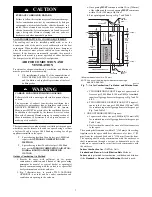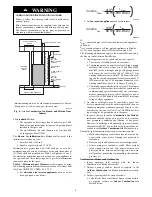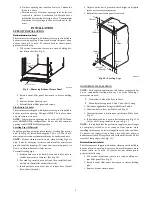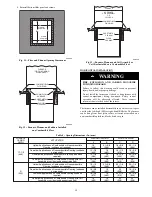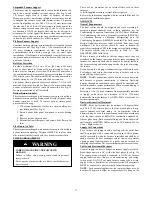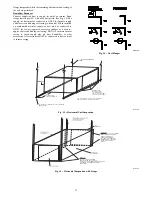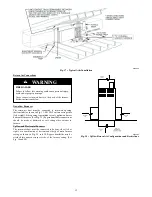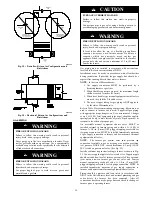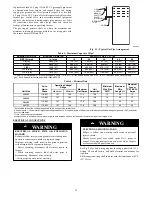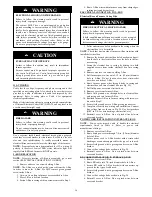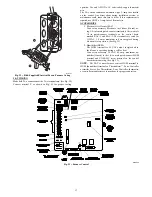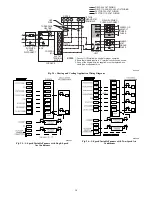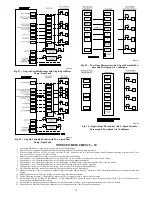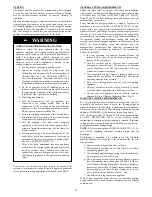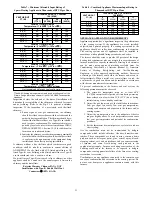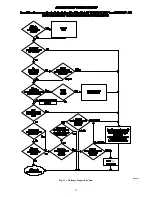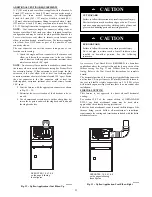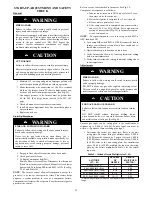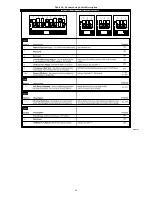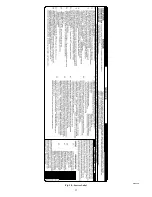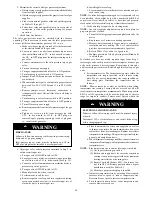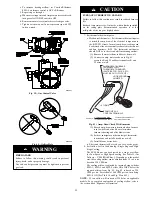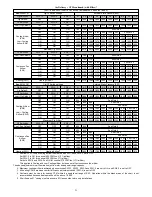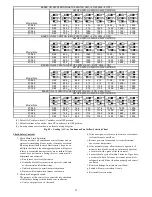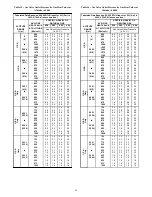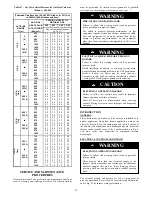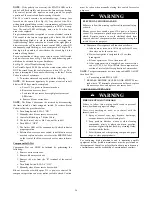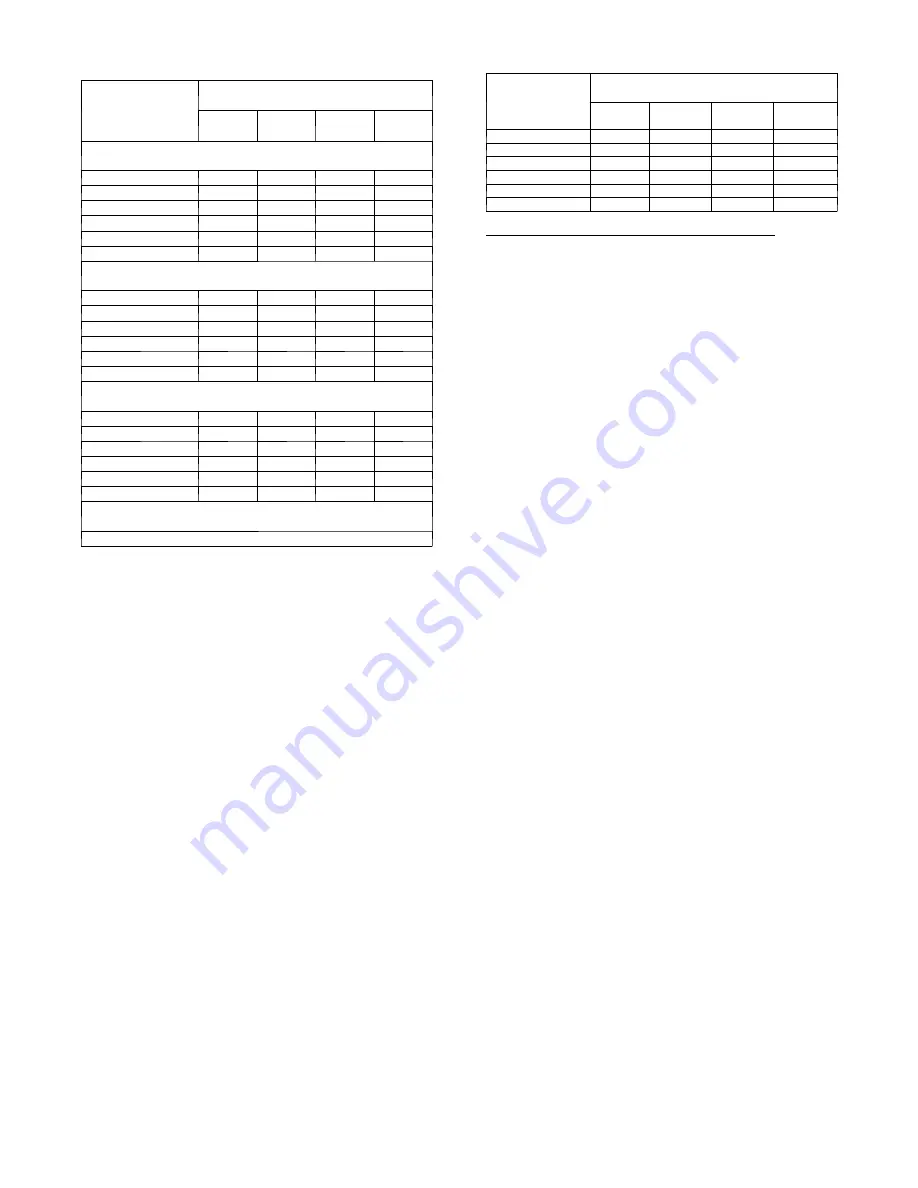
21
Table 7 – Minimum Allowable Input Rating of
Space--Heating Appliance in Thousands of BTUH per Hour
VENT HEIGHT
FT (M)
INTERNAL AREA OF CHIMNEY
IN
2
. (MM
2
)
12
(7741)
19
(12258)
28
(18064)
38
(24516)
Local 99% Winter Design
Temperature: 17 to 26
_
F* (---8 to ---3
_
C)
6 (1.8)
0
55
99
141
8 (2.4)
52
74
111
154
10 (3.0)
NR
90
125
169
15 (4.6)
NR
NR
167
212
20 (6.1)
NR
NR
212
258
30 (9.1)
NR
NR
NR
362
Local 99% Winter Design
Temperature: 5 to 16
_
F* (---15 to ---9
_
C)
6 (1.8)
NR
78
121
166
8 (2.4)
NR
94
135
182
10 (3.0)
NR
111
149
198
15 (4.6)
NR
NR
193
247
20 (6.1)
NR
NR
NR
293
30 (9.1)
NR
NR
NR
377
Local 99% Winter Design
Temperature: ---10 to 4
_
F* (---23 to ---16
_
C)
6 (1.8)
NR
NR
145
196
8 (2.4)
NR
NR
159
213
10 (3.0)
NR
NR
175
231
15 (4.6)
NR
NR
NR
283
20 (6.1)
NR
NR
NR
333
30 (9.1)
NR
NR
NR
NR
Local 99% Winter Design
Temperature: ---11
_
F (---24
_
C) or lower
Not recommended for any vent configuration.
*
The 99.6% heating db temperatures table found in the Appendix of the
Climatic Design Information chapter of the 2017 ASHRAE Fundamentals
Handbook.
Inspections before the sale and at the time of installation will
determine the acceptability of the chimney or the need for repair
and/or (re)lining. Refer to the Fig. 31 to perform a chimney
inspection. If the inspection of a previously used tile--lined
chimney:
a. Shows signs of vent gas condensation, the chimney
should be relined in accordance with local codes and the
authority having jurisdiction. The chimney should be re-
lined with a listed metal liner, or a Type--B vent shall be
used to reduce condensation. If a condensate drain is re-
quired by local code, refer to the current edition of NFGC
NFPA54/ANSI Z223.1, Section 12.10 for additional in-
formation on condensate drains.
b. Indicates the chimney exceeds the maximum permissible
size in the tables, the chimney should be rebuilt or relined
to conform to the requirements of the equipment being
installed and the authority having jurisdiction.
A chimney without a clay tile liner, which is otherwise in good
condition, shall be rebuilt to conform to current edition of
ANSI/NFPA 211 or be lined with a UL listed metal liner or UL
listed Type--B vent. Relining with a listed metal liner or Type--B
vent is considered to be a vent--in--a--chase.
If a metal liner or Type--B vent is used to line a chimney, no other
appliance shall be vented into the annular space between the
chimney and the metal liner.
Exterior Masonry Chimney FAN + NAT
Installations with Type--B Double Wall Vent
Connectors
NFPA & AGA
Table 8 – Combined Appliance Maximum Input Rating in
Thousands of BTUH per Hour
VENT HEIGHT
FT. (M)
INTERNAL AREA OF CHIMNEY
IN
2
(MM
2
)
12
(7741)
19
(12258)
28
(18064)
38
(24516)
6 (1.8)
74
119
178
257
8 (2.4)
80
130
193
279
10 (3.0)
84
138
207
299
15 (4.5)
NR
152
233
334
20 (6.0)
NR
NR
250
368
30 (9.1)
NR
NR
NR
404
APPLIANCE APPLICATION REQUIREMENTS
Appliance operation has a significant impact on the performance
of the venting system. If the appliances are sized, installed,
adjusted, and operated properly, the venting system and/or the
appliances should not suffer from condensation and corrosion.
The venting system and all appliances shall be installed in
accordance with applicable listings, standards, and codes.
The furnace should be sized to provide 100 percent of the design
heating load requirement plus any margin that occurs because of
furnace model size capacity increments. Heating load estimates
can be made using approved methods available from Air
Conditioning Contractors of America (Manual J); American
Society of Heating, Refrigerating, and Air--Conditioning
Engineers; or other approved engineering methods. Excessive
oversizing of the furnace could cause the furnace and/or vent to
fail prematurely. When a metal vent or metal liner is used, the
vent must be in good condition and be installed in accordance
with the vent manufacturer’s instructions.
To prevent condensation in the furnace and vent system, the
following precautions must be observed:
1. The return--air temperature must be at least 60
_
F
(16
_
C)db except for brief periods of time during warm--up
from setback at no lower than 55
_
F (13
_
C) db or during
initial start--up from a standby condition.
2. Adjust the gas input rate per the installation instructions.
Low gas input rate causes low vent gas temperatures,
causing condensation and corrosion in the furnace and/or
venting system.
3. Adjust the air temperature rise to the midpoint of the rise
range or slightly above. Low air temperature rise can cause
low vent gas temperature and potential for condensation
problems.
4. Set the thermostat heat anticipator or cycle rate to reduce
short cycling.
Air for combustion must not be contaminated by halogen
compounds which include chlorides, fluorides, bromides, and
iodides. These compounds are found in many common home
products such as detergent, paint, glue, aerosol spray, bleach,
cleaning solvent, salt, and air freshener, and can cause corrosion
of furnaces and vents. Avoid using such products in the
combustion--air supply. Furnace use during construction of the
building could cause the furnace to be exposed to halogen
compounds, causing premature failure of the furnace or venting
system due to corrosion.
Vent dampers on any appliance connected to the common vent
can cause condensation and corrosion in the venting system. Do
not use vent dampers on appliances common vented with this
furnace.
Содержание 830CA
Страница 22: ...22 A180242 Fig 31 Chimney Inspection Chart...
Страница 26: ...26 Table 10 Furnace Setup Switch Description A190351...
Страница 27: ...27 A190348 Fig 38 Service Label...
Страница 43: ...43 A190249 Fig 45 Wiring Diagram...

